
The battle against invasive alien species in Namibia
Invasive Alien Working Group
11th November 2022
Invasive alien plants and animals are one of the five major threats to global biodiversity. These are defined as non-indigenous species that adapt well to conditions where they are introduced and then spread or flourish rapidly, often in the absence of their natural enemies. If nothing is done to reduce the spread or eradicate these species, they can take over large pieces of agricultural and protected land, cause disease or injuries to both livestock and wildlife, negatively affect indigenous plants and animals, and ultimately damage native ecosystems.
In Namibia, 38 trees or large shrubs, 62 forbs (flowering plants) and several grasses are considered invasive alien plants, 15 of which pose serious economic and ecological threats. Many of the invasive shrubs are cactus species that flourish in Namibia's arid environments, while aquatic weeds can choke the few permanent water sources in the country. Dry riverbeds and other disturbed areas are particularly vulnerable to invasion, which diminishes groundwater.
Several invasive alien animal species have been recorded in Namibia, including seven fishes, three reptiles, four birds, four snails, one crayfish, two mussels and seven mammals. Eleven of these are considered serious threats to our native species. Besides outcompeting local species for space and resources (often the main threat), some invasive alien animals are similar enough to our native animals to interbreed with them and thus pose a genetic problem.
Winning the battle against invasive alien species requires a multi-pronged strategy that involves the public, government, and non-governmental partners. Most of the work until now has focused on controlling plant species, since these are currently a bigger problem for Namibia than the animal species. The four main prongs of this strategy are:
- creating public awareness of the problem;
- mapping the current distribution of invasive aliens;
- manually removing problematic species;
- deploying biological control agents.
Creating awareness
Public awareness requires providing accurate information to the public using as many outlets and formats as possible. Popular articles, books and book chapters, posters and lectures have all been used to explain why invasive alien species are a problem and what the public can do to help. It is especially important that people do not unwittingly plant invasives in their gardens or release invasive animals into the wild (e.g. releasing fish into a dam or river).
The Botanical Society of Namibia has taken the lead in creating awareness by producing the Nasty Nine – Alien Invasive Species poster and a series of factsheets containing more detailed information. The Tree Atlas of Namibia, Trees and Shrubs of Namibia (2009 and 2018 editions) and the 2022 edition of the Atlas of Namibia all include sections on invasive alien plants. The Botanical Society is currently preparing information and maps on their website to highlight some of the most problematic plant species and areas of Namibia that are particularly vulnerable to plant invasion.
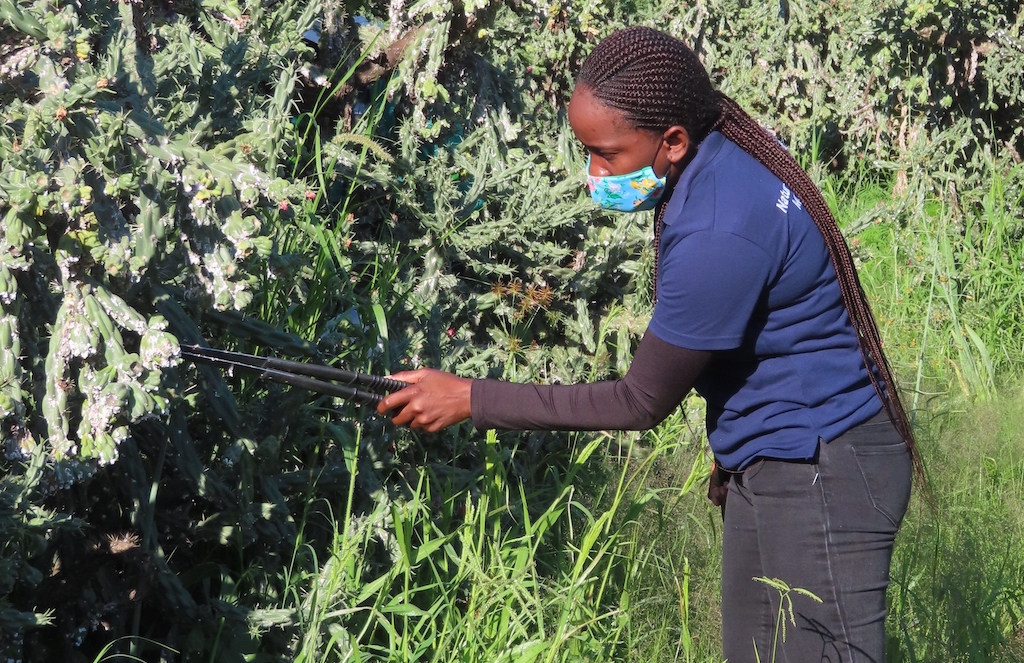

Identifying and mapping invasive alien plants
Another way in which the public can help in the battle against invasive species is to record sightings of these plants by using the Atlasing in Namibia mobile application. The app includes clear photographs and brief descriptions of 36 invasive alien plant species to help users identify the species of concern. Verified records are then shown on maps on the atlasing part of the Namibian Environmental Information Service. These maps allow conservationists to identify invasive hotspots, keep track of the spread of species and develop plans for controlling them.
To complement the app, a clearly illustrated field guide with preliminary maps of an expanded list of the 50 most invasive or potentially invasive alien plants in Namibia was prepared by Petra Mutota, an Honours student at the Namibia University of Science and Technology (NUST), with the assistance of Coleen Mannheimer and Ben Strobach. A poster covering the same species has also been produced. The field guide and poster will be published once funding is secured.
Manually controlling invasive plants
The Cactus Clean-Up team, led by Gunhild Voigts, regularly clears stands of cacti and other alien plants around Windhoek. This enthusiastic team has managed to clear invasive cacti in several areas and has persuaded many gardeners to plant non-invasive indigenous plants rather than cacti (see text box for more information).
Other more sporadic initiatives in the city and elsewhere in Namibia tend to be undertaken by volunteers, rangers in our national parks, municipalities and youth from schools, environmental clubs and environmental education centres, often as part of the President's annual clean-up day. The 3rd Windhoek Scouts have organised several invasive alien clearing days around Avis Dam.


Biological Control
Biological control (or biocontrol) involves introducing specifically identified natural enemies of the targeted invasive alien species. To ensure that these natural enemies do not become invasive, they are rigorously tested in hermetically sealed laboratory conditions, usually for at least three years, before they are introduced to the alien plants in the field. For plants, most biological control agents are insects that attack particular plant species, thus preventing the plant's growth and reducing its ability to reproduce and spread.
The earliest attempt at biological control of an invasive alien plant in Namibia targeted Kariba weed (Salvinia molesta), first recorded in the Zambezi River in 1948. By the 1960s it made headlines when dense mats formed on the newly impounded Kariba Dam. Ten years later similar mats were blocking channels in the Eastern Zambezi (formerly Caprivi) wetlands, interfering with the movement of boats and reducing fish catches. These mats block the sunlight needed by submerged plants and as the weeds decay they deplete the oxygen available for fish and other aquatic species.
In the early 1980s, 644 weevils of the specific species known to attack Kariba weed were imported from Australia, where they had been thoroughly tested, and used effectively. By 1998, 98% of the sites were free of the weed. Today, some plants are still found on the edges of lakes and rivers, but they are no longer a problem and insects can be quickly released if the weed gets out of control again.
In the mid-1980s, a cochineal insect was introduced to Namibia from South Africa to control the sweet prickly pear cactus (Opuntia ficus-indica), which had become a major problem particularly in the Otavi mountain area. The cochineal was highly effective and today this cactus is at such a low population level in that area that it is not of ecological concern.
More than thirty years after these success stories, in 2019, the Botanical Society and the Namibian Chamber of the Environment (NCE) received government permission (environmental clearance certificate and phytosanitary import permit) to import from South Africa and release three biocontrol agents to target three particularly invasive cactus species. Two cochineal insect species targeted the imbricated or devil's rope cactus (Cylindropuntia imbricata) and the common pest pear cactus (Opuntia stricta) respectively, while a mealybug species was released on the midnight lady or snake cactus (Harrisia pomanensis).
Dr Iain Paterson from the Centre of Biological Control of Rhodes University in South Africa brought the biocontrol agents and demonstrated how to release these species at two selected sites in Windhoek. In the three years since then, Lucrensia Ndeilitunga, Aktofel Elago and Monica Nande, NUST students funded by the Botanical Society and Rhodes University, have been monitoring the effectiveness of the cochineal insects and moving them from one cactus stand to another when necessary (these insects cannot move over large cactus-free areas).
The results for the cochineal biocontrol agent on the devil's rope cactus have been mixed. The insect takes time to become established, especially on woody old cacti, on plants growing on steep slopes and in areas that are too exposed or are vulnerable to flooding. After two years, 90-100% of the cladodes (the fleshy cactus leaves
) on most of this cactus species were covered by the cochineal insects at seven of the ten study sites. The number of small cactus plants had been drastically reduced and any remaining small plants were covered in cochineal. By mid-2022, most plants were reduced in height by 5-20 cm at the seven sites where the cochineal is well established.
Despite the success recorded to date for most of the study sites, we cannot afford to become complacent. In August 2022, the researchers were surprised and disappointed to find that the cactus stands at the original release site had started to recover and were growing strongly with low infestation rates. The likely causes are a combination of intense rain early in 2022 and abnormally severe frost this winter. The absence of small plant regrowth from dropped cladodes indicates that the biocontrol is working. It also shows that ongoing monitoring is important and that reinfestation with the biocontrol insect may be necessary from time to time.
Now that many of the cacti at the survey sites are well covered by cochineal, the next step is to combine manual and biological control by felling the large cacti and leaving their cochineal infested remains at the site. Thus, the biocontrol insect will continue infecting the smaller plants, while our monitoring exercises continue to keep track of their progress.
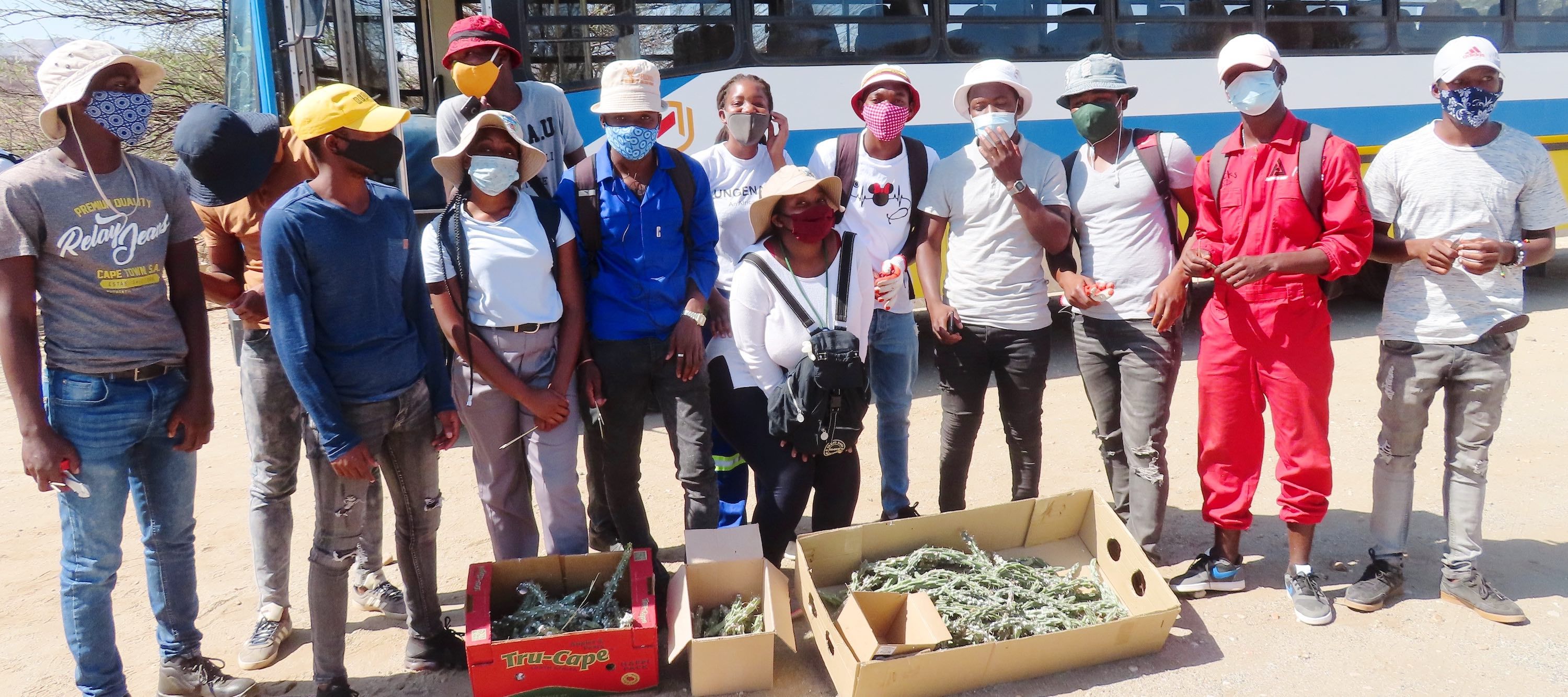
Next steps: developing a strategy and action plan
A more concerted, integrated approach is needed to fully control the spread of invasive alien species across Namibia. NCE therefore invited those with experience and interest in the control of invasive alien species, from government, local authorities, NGOs and academia, to discuss a strategy to address invasive alien species.
All agreed on the need for an Action Plan for invasive alien species with four clear components:
- preventing the import of invasive and potentially invasive alien species into Namibia;
- stopping the spread of existing invasive species within Namibia;
- actively managing, controlling or eradicating (where possible) these species; and
- establishing an inclusive institutional mechanism to implement the plan.
The Invasive Alien Species Working Group will be established to allow cooperation among all of the key role players that will be implementing these activities. As it involves the government and all non-governmental organisations working on this problem, the Working Group will coordinate activities and seek joint funding to implement the action plan. By joining forces and reaching out to the public for help, we are taking the battle against invasive alien species to the next level.
Control options for prosopis trees and shrubs
by Dr Ben Strohbach, NUST
Prosopis trees were initially introduced into southern Africa (and many other arid areas of the world) because of their drought tolerance, potential to produce fuel wood, timber, and highly nutritious pods that are used as livestock fodder. One of the main methods of Prosopis seed distribution is through animal dung. Since then, these tree species (there are four in Namibia) have spread along dry and perennial watercourses, threatening native vegetation and using vast amounts of precious groundwater.
If farmers still want to use the pods as fodder but prevent the further spread of Prosopis on their land, they need to collect and crush the pods before feeding them to animals. This requires buying a hammermill and diligently collecting the pods rather than allowing animals to eat them where they fall. Thus, money and extra labour is needed.
The second option is the use of two seed-eating beetle or bean weevil species (in the Bruchidae family) as biocontrol. These have established well in South Africa and have destroyed up to 75% of the Prosopis seed crop in the country. This form of biological control was tested in Namibia in the 1990s, but no information is available on the results of these trials.
Prosopis has been successfully controlled in Yemen and Niger through harvesting for firewood. In Namibia, however, a pilot community project in Gibeon showed that people buying firewood prefer local woods (primarily acacia) rather than Prosopis. Another problem found during the pilot project was the ability of Prosopis to coppice, or resprout from the stump, after the tree is cut down. Removal of the stumps also proved to be problematic, as Prosopis is well-rooted. Even saplings proved difficult to remove.
Until recently, the remaining option was the use of arboricides (tree poisons). These broad-spectrum herbicides are unselective (also kill indigenous tree species), water-soluble, toxic to fish and wildlife, and potentially carcinogenic to humans. These chemicals can persist in the soil for months or even years, and pollute groundwater. The use of these poisons, however carefully applied, is therefore not recommended.
Recent genetic research has improved our understanding of the phytogenetic links between different Prosopis, and split them into four genera, placing ours in a new genus, Neltuna. But more importantly this work has aided the task of selecting more targeted, specific biocontrol agents, with several that show promise.
Early biocontrol studies on Prosopis focussed on control agents that damage the seeds or pods, thereby aiming to reduce the spread by reducing seed viability but retaining the useful
value of the trees to farmers as shade, fodder, timber, and fuelwood. Recent global satellite imagery has, however, made it clear just how fast Prosopis is spreading, and how dense and impenetrable these thickets can be, while groundwater studies in South Africa show that these much denser stands deplete groundwater resources up to six times faster than the naturally more widely spaced indigenous trees do. Thus, scientists recommend a shift from the old compromise between spread and value to eradication of the trees.
The most recent review plainly states that there is no other route than biocontrol to successfully control and manage Prosopis. Our emphasis here in Namibia should also be to join this shift towards achieving effective biocontrol by testing control agents that harm the growth and leaves of the trees, and thereby achieve the same results as the arboricides more safely, if not as quickly.
Fighting alien invasion in Windhoek
by Gunhild Voigts, Cactus Clean-Up
The entire City of Windhoek is not my own private property, nor is it yours, nor is it private property of the City of Windhoek. Together we share the responsibility for our urban environment. This includes joining the battle against invasive alien plant species.
The biocontrol agents released in Windhoek currently target only two of many problematic plant species, but we have found that their effectiveness varies from place to place. Even where the insects have been highly effective, manual control is needed to clear the dead cacti from the problem areas. Manual removal remains our main weapon against all of the other species and on sites where the biocontrol agents are not working.
Past endeavours to cut down the cacti were ineffective because there was no coordinated approach, thus allowing the plants to return when the work stopped. In November 2015, a number of retired Windhoek residents came together to organise and finance a more sustained effort through the Cactus Clean-Up initiative. We removed aliens wherever we could and offered employment to job seekers to clear large areas whenever funds were available.
Cactus Clean-Up has cleared many parts of Windhoek from damaging vegetation, especially open spaces owned by the City of Windhoek, but also roadsides and private properties. With our current resources we have tackled many species of cacti, rubber vine (Cryptostegia grandiflora), thorn apple species (Datura species), prickly poppy (Argemone species) and fountain grass (Pennisetum setaceum).
Clearing invasive alien species in Windhoek remains a huge challenge and we cannot do it alone. You can participate by learning to identify the worst alien invaders and removing them from your garden and surroundings. The EIS photo guide of alien plants is a good place to start learning (see link below). Never plant any of the species on this list in your garden!
The City of Windhoek's extra effort to clear alien species on World Environment Day was a great initiative, but we should all make alien removals an everyday habit. If this environmental threat is neglected for too long then our community will have a disaster on its hands. We have no other planet to go to, so let's join hands in fighting to save the one we have!
See our photo guide to invasive alien plants.
WANTED POSTER
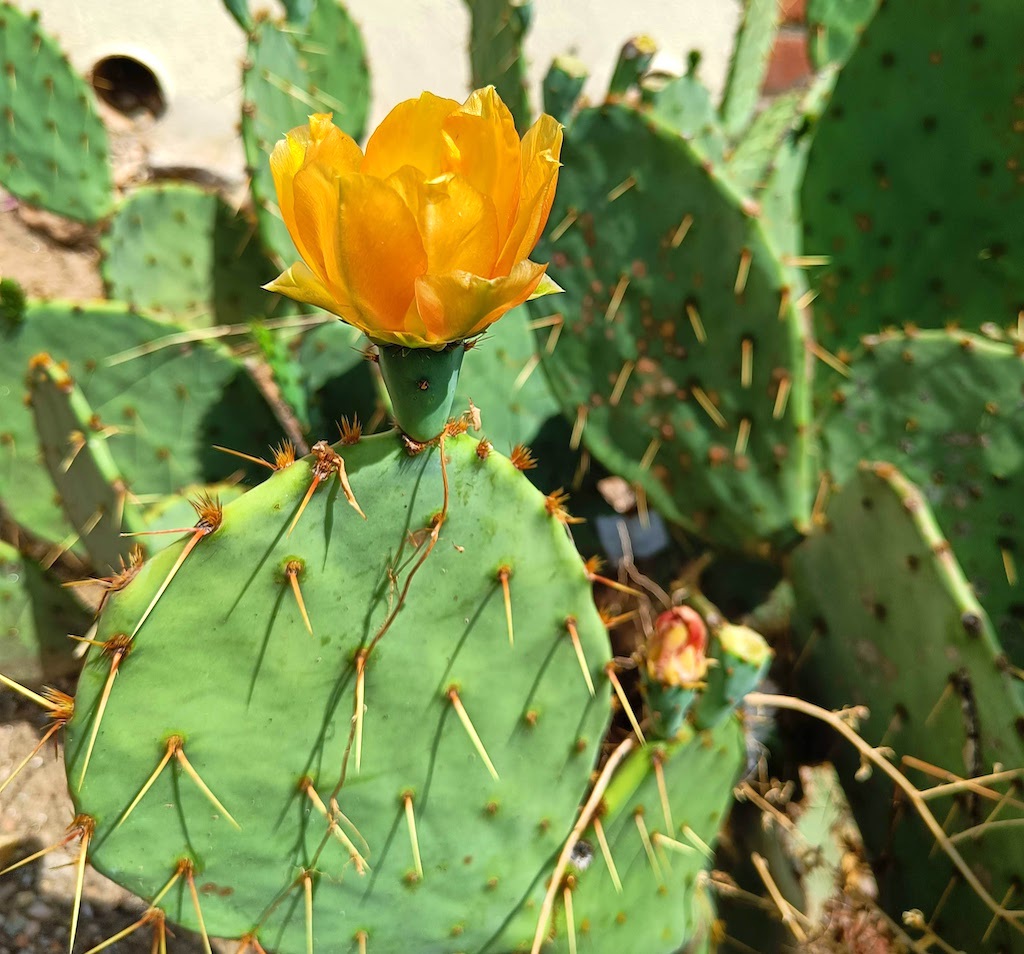

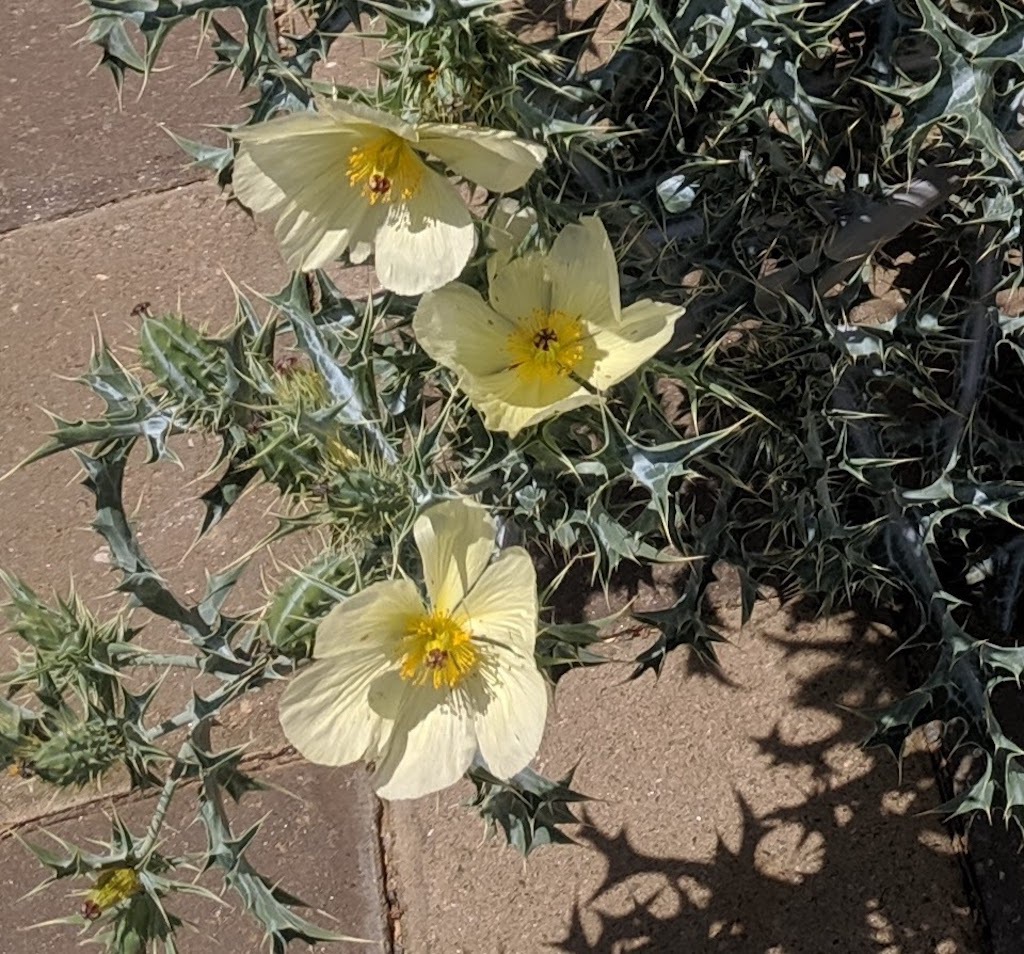
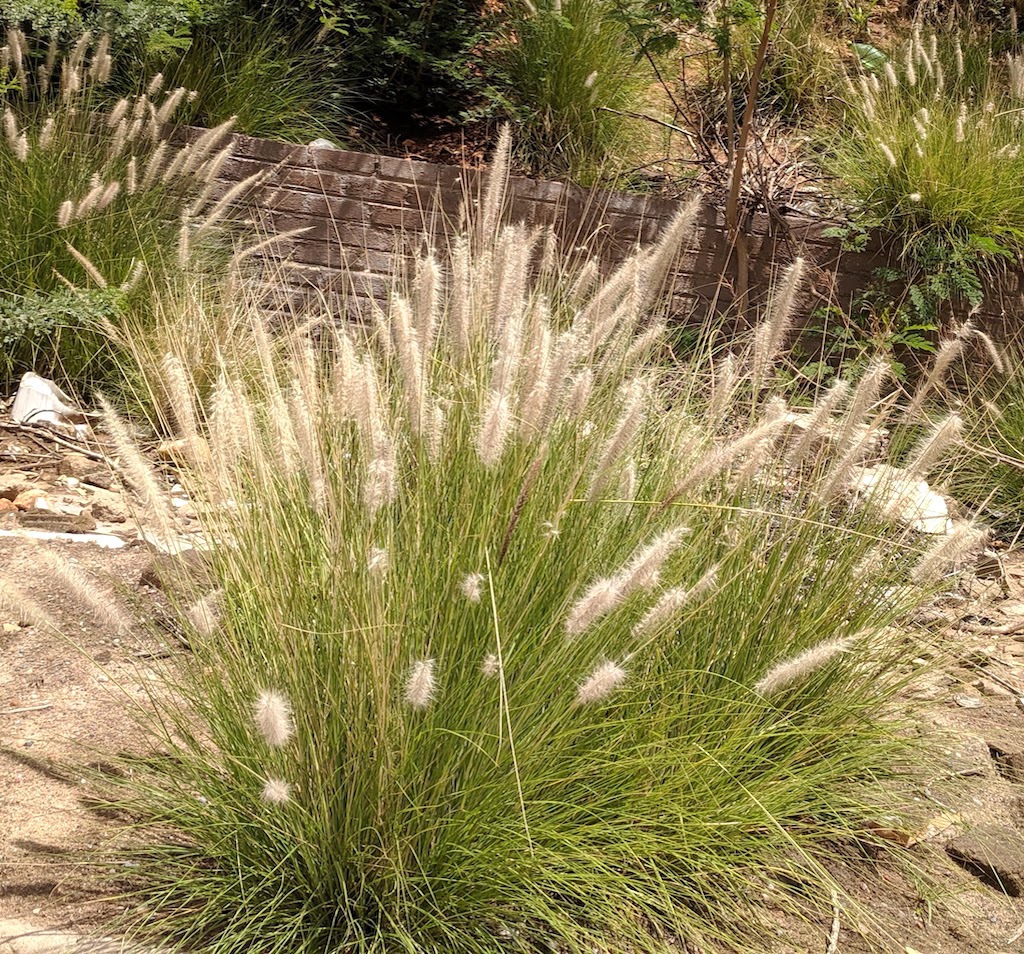
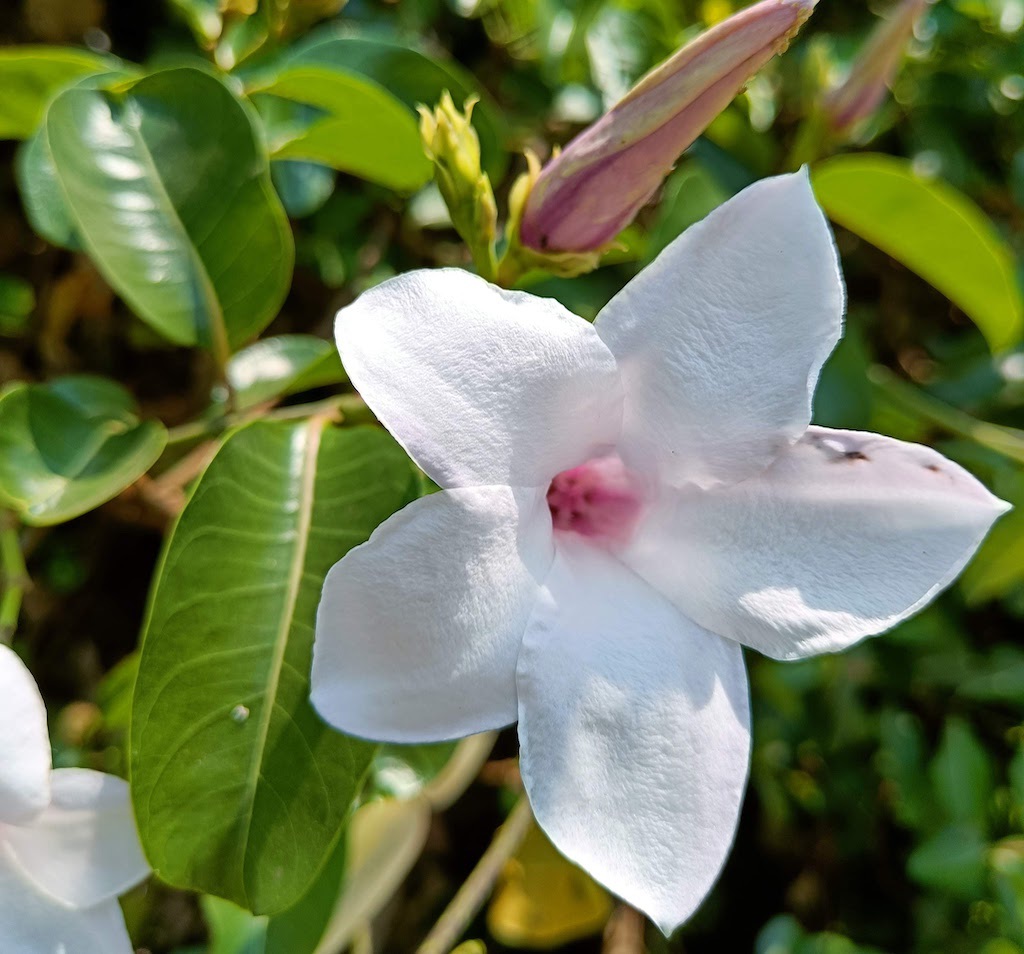


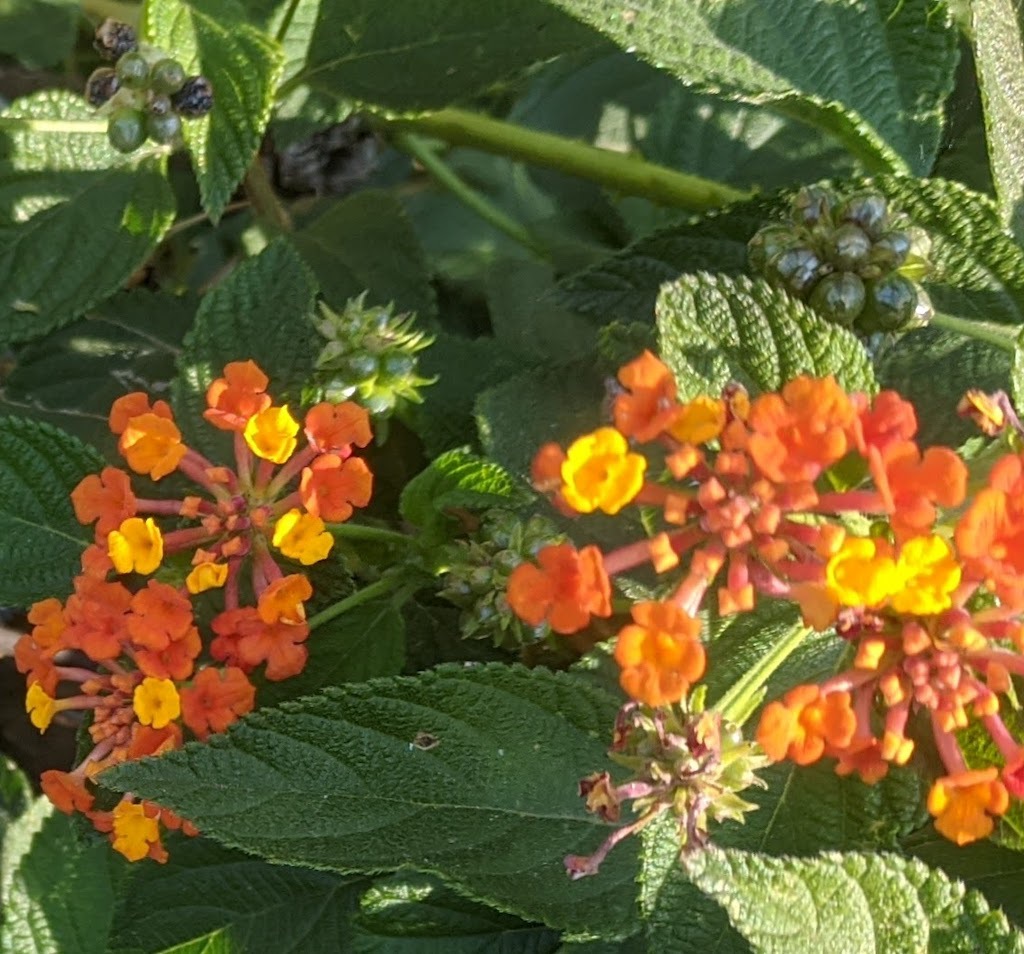
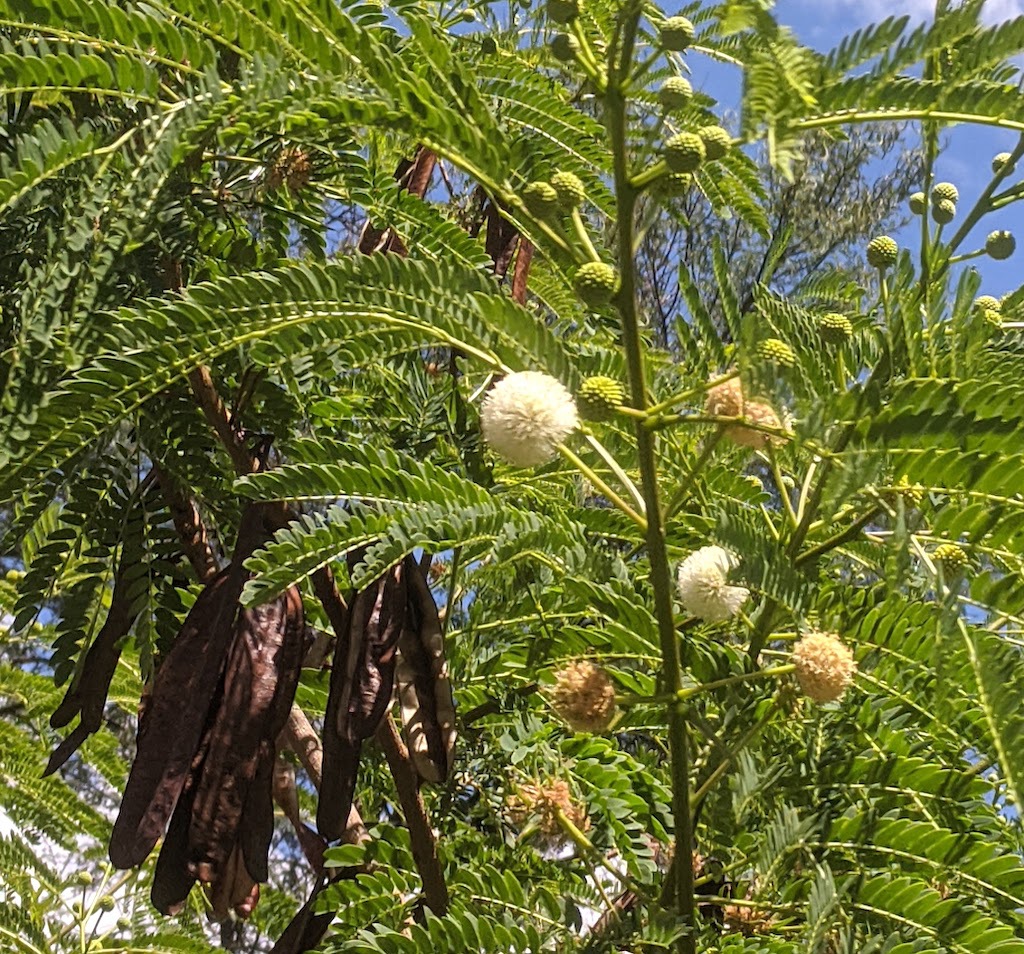
If you enjoyed this page, then you might also like:


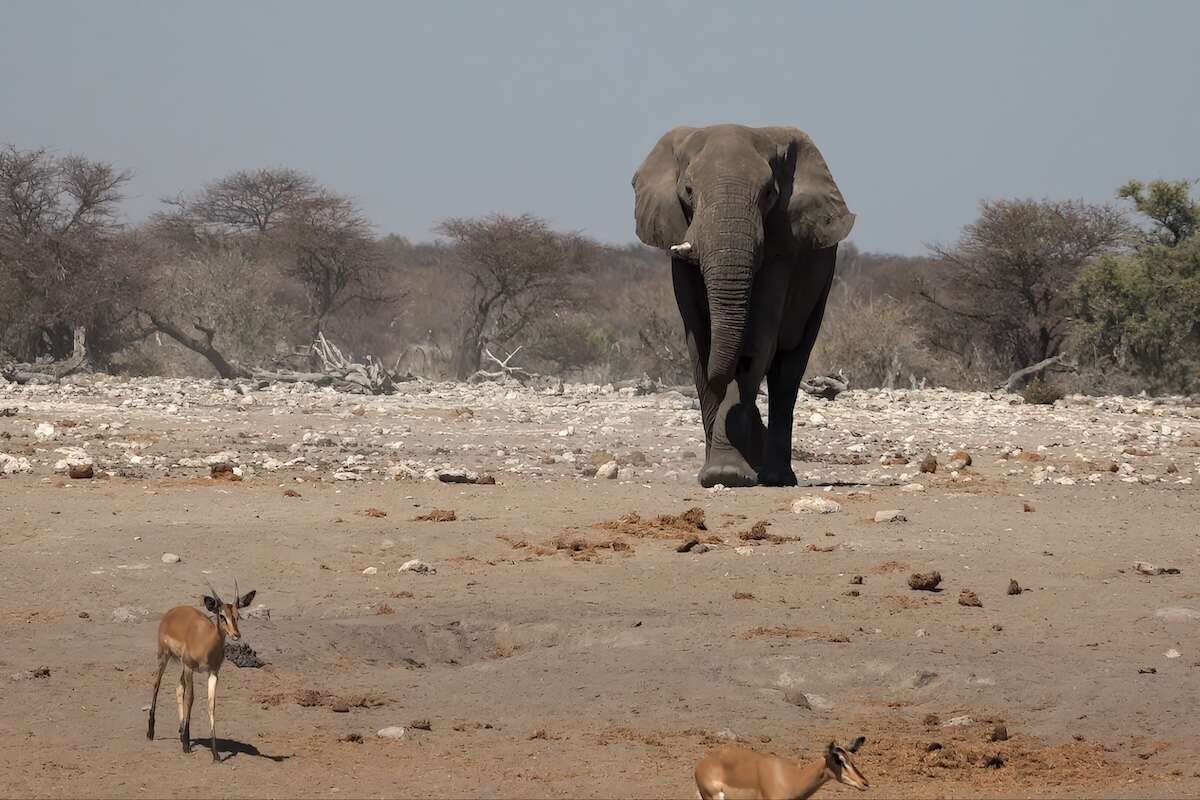
For articles on similar topics, please click one of the following options:
For more great articles from Conservation Namibia see below...
Conservation Namibia brought to you by:
We use cookies to monitor site usage and to help improve it. See our Privacy Policy for details. By continuing to use the site, you acknowledge acceptance of our policy.








